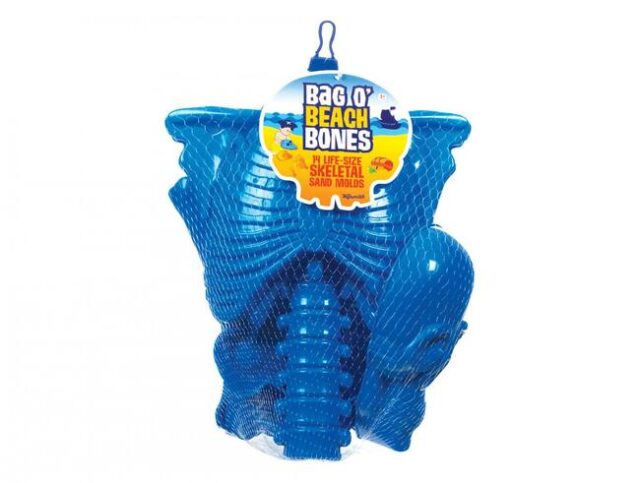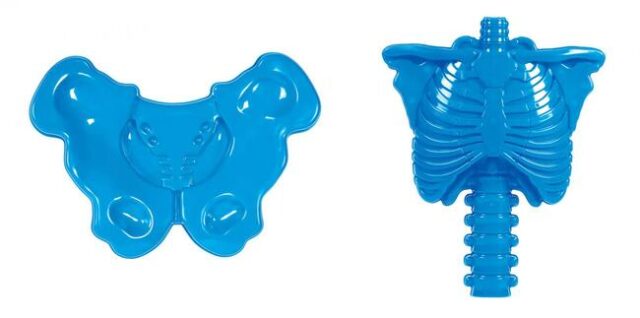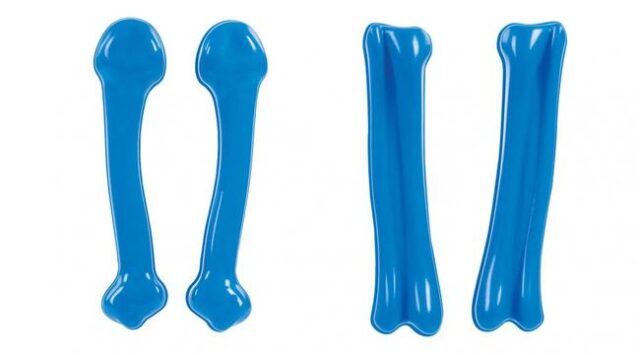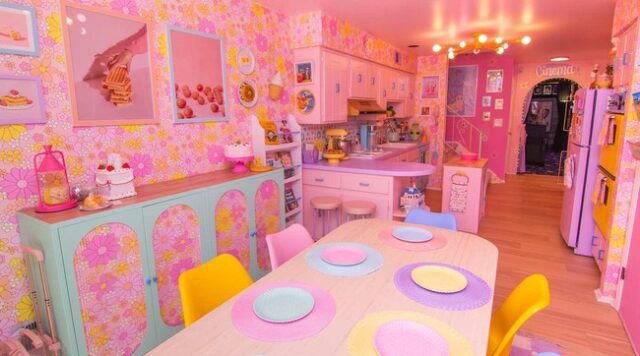
A real-life Barbie Dreamhouse in New Jersey has become the talk of the town after going viral on the Instagram account Zillow Gone Wild. This vibrant, three-bedroom bungalow, located on Hughes Drive in Hamilton Township, is an explosion of bright pinks and calming lavenders. The unique property includes a cinema room, a large walk-in wardrobe, a craft room, and even a handbag wall, all meticulously designed to capture the essence of Barbie’s dream world. From the moment you step through the pink front door and encounter the daisy wallpaper, it’s clear this home is unlike any other, making it a perfect match for a Barbie superfan. The cinema room, adorned with dark purple walls and rows of recliner seats, is just one of the many delightful features that make this home stand out.
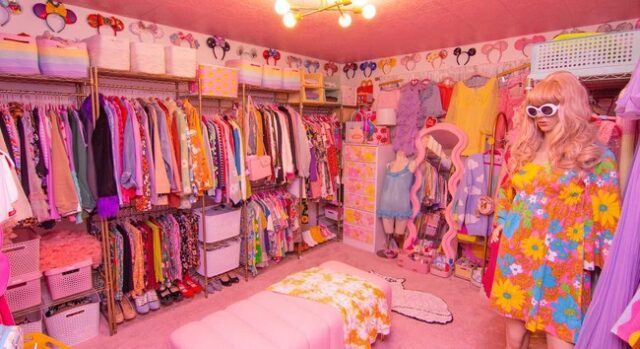
The listing, which describes the property as having “good energy and good vibes,” has drawn significant attention, with an asking price of $500,000. The home’s owner, Kate Gabrielle, has already received interest from potential buyers, some of whom are eager to retain the distinctive furniture and décor. Social media commenters have praised the home’s cheerful atmosphere, with one noting it would be “impossible to have a bad day living here.” The Zillow listing highlights the home’s new vinyl flooring throughout the main floor, new carpet in the bedrooms and theatre, and custom tile in the bathrooms. Whether viewed as cheery or cheesy, there’s no denying Kate’s passionate commitment to her unique style, which has made this Barbie Dreamhouse a viral sensation and a potential new home for an equally enthusiastic buyer.
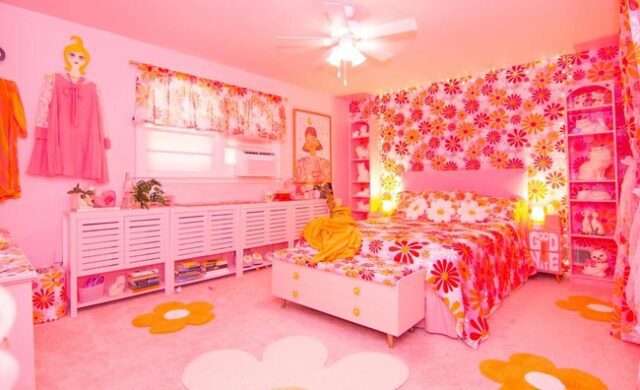
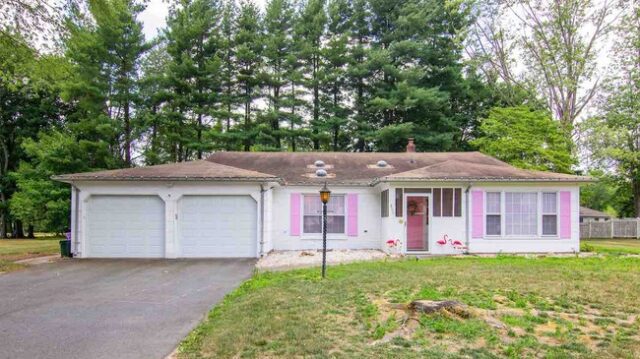

Sara Shabir, a dedicated elementary school teacher at Tyndale Community School in Oxford, England, crafted a heartfelt and unique end-of-year gift for her third-grade students by crocheting miniature versions of each one. Starting the project in May, she devoted approximately eight hours to create each of the 30 personalized dolls, culminating in a remarkable 240-hour labor of love. Inspired by her affection for her pupils and her passion for crocheting, which she picked up during the COVID-19 lockdowns, Sara meticulously designed each doll to capture the distinct features and personalities of her students. This thoughtful gesture not only commemorated their time together but also provided the children with a tangible and cherished memento of their year.

The presentation of these tiny lookalikes was met with joy and amazement. Sara’s attention to detail, from matching hairstyles to accurately representing skin tones, ensured that each doll was a perfect mini-me of its student. The children were thrilled and touched by the personalized gifts, instantly recognizing themselves and playing with their miniature counterparts. The gesture quickly gained widespread admiration after a parent, Joanna Borysiak, shared the heartwarming story on Twitter-X, praising Sara as “the absolute GOAT” for her incredible effort. Sara’s project not only delighted her students but also showcased the profound impact of a teacher’s love and dedication, leaving an indelible mark on the hearts of her students and the wider community.
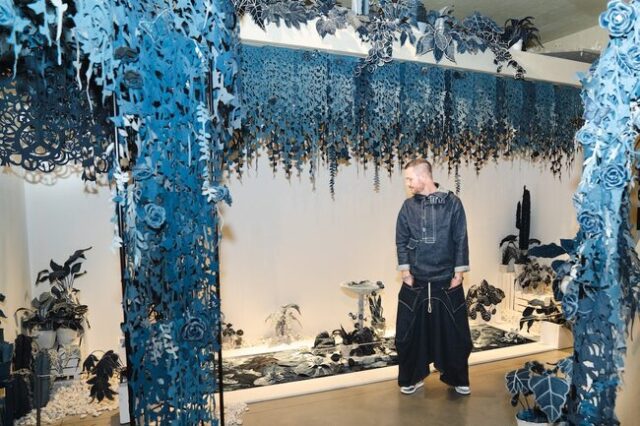
For many, denim is a wardrobe staple, but for London-based artist Ian Berry, it’s a creative medium. Over the past two decades, Berry has utilized the familiar navy blue fabric to craft intricate installations, iconic portraits, and even photorealistic depictions of California. His latest work, titled “Secret Garden,” continues to demonstrate the innovative and unexpected ways denim can be transformed. This installation, currently on display at the Garden Museum in London, reimagines a serene setting complete with a fish pond, flowers, and vines—all meticulously fashioned from recycled denim jeans. Initially exhibited at the Children’s Museum of the Arts in New York in 2017, the Secret Garden has since been showcased in various site-specific locations and galleries around the world. Although Continue reading “Artist Transforms Recycled Denim Into Stunning “Secret Garden” Installation” »

Many of us spend summers on the beach, creating sand castles with our families as children. But did you know that it could also be a career? For sculptor Janel Hawkins, it’s been a fulfilling way to stay creative and spread joy while teaching skills to others. As the founder of Alabama-based Sand Castle University, she teaches willing students on the Gulf Coast everything they need to know to create stunning sand sculptures. And at the same time, she spends her days on the beach making custom sand art. Whether creating pieces of architecture or animals, Hawkins loves getting lost in the small details. As she painstakingly carves and presses the wet sand, she also needs to remain on her toes. Anything can happen in her open-air art studio, whether it’s bad weather or creative difficulties. But these variables are also what she loves about creating these ephemeral sculptures and is part of the reason she enjoys sharing her knowledge. “There are practical life lessons to sand sculpting,” she tells My Modern Met. “You have to learn the basics, then practice, practice, practice. Don’t be afraid of failure. If you make mistakes, it means you’re trying hard!”
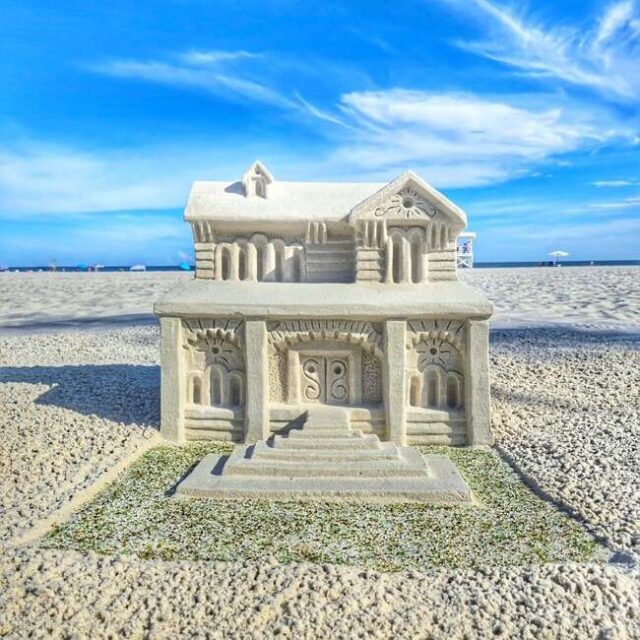
Hawkins began her journey as a sand sculptor while still in college after seeing a job listing on Craigslist. After acquiring the necessary skills, she pursued her passion by opening Sand Castle University in 2017. With a team of five instructors and an administrative assistant, her business is expanding. At the same time, she’s also continuing to grow her own skills. Last year, she took on a dragon sculpture for the first time when she sculpted Mushu, the lovable dragon from Disney’s Mulan. Getting the details of the scales and pointy teeth took a lot of time and patience, but it was worth it in the end. “Everything came together—the sand was perfect, the weather was perfect—and when I stood back after finishing, I knew it was something to be proud of!” Whether creating personal projects or working on commissions for festivals, birthdays, proposals, or corporate events, she’s always looking forward to the day’s challenge. As she continues her successful career, she hopes to show that sand sculpting can be a viable career and a fun, creative activity for anyone looking to step away from the screen and spend some time at the beach. Follow Sand Castle University on TikTok or Instagram to keep up with the progress and watch these sand sculptures come to life.

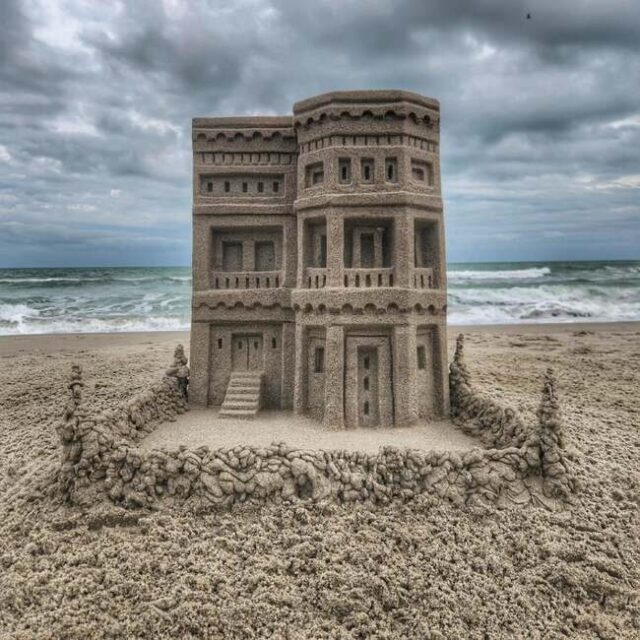



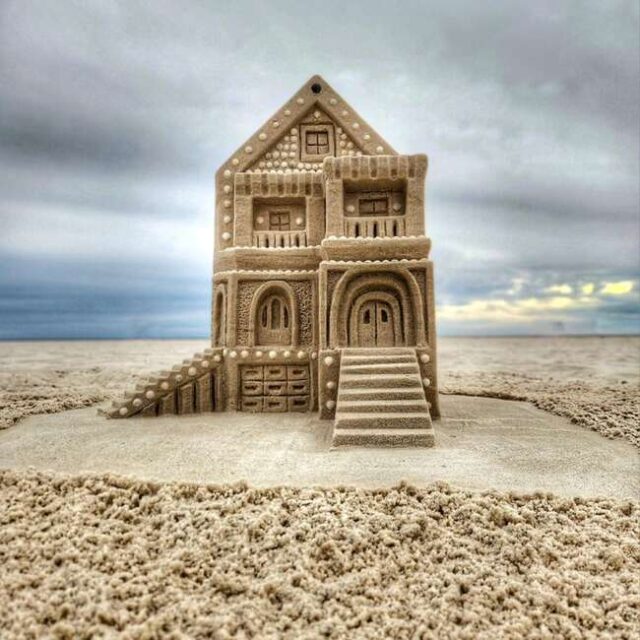



United Airlines has found an innovative solution to the disposal of its expired life jackets by partnering with the German upcycling company, B2L. This initiative was inspired by Erin Taylor, an environmental affairs manager at United, who sought a creative method to divert these life jackets from landfills. The collaboration has transformed thousands of outdated life jackets into a stylish collection of bags, including backpacks and bags for laundry, laptops, and the beach. This project not only reduces the environmental impact by saving 900 pounds of waste from landfills but also aligns with United Airlines’ commitment to sustainability. The upcycled bags have received positive feedback and highlight the potential for creative recycling solutions in the aviation industry.

The life jackets, which must be replaced every 8 to 10 years according to aviation safety regulations, accumulate significantly, with over 19,000 jackets expiring annually from United’s Boeing 737 fleet alone. By converting these into practical and trendy products, United Airlines and B2L have addressed the environmental challenge posed by the long decomposition period and methane emissions of these materials in landfills. The success of the first year of this program, marked by the positive reception of the products and the substantial diversion of waste, has led to a contract renewal with double the volume for the second year. Despite the high prices of the upcycled bags, which start at over $100, the initiative stands as a testament to the potential for environmentally conscious practices to intersect with fashion and utility, contributing to broader sustainability efforts.
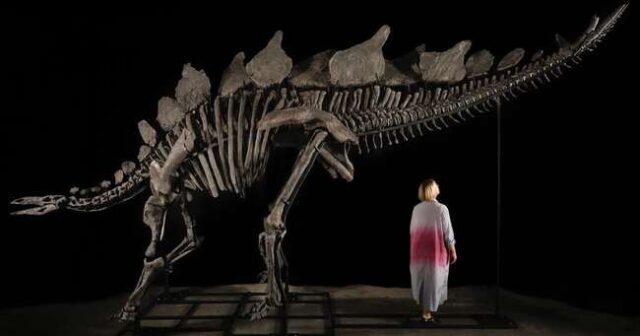
The first Stegosaurus fossil to be presented at auction was just sold for a record-breaking $44.6 million at Sotheby’s in New York. Over more than 15 minutes, prospective buyers drove the bids up to nearly 11 times the fossil’s estimated value of $6 million. This staggering sale price makes it the most expensive dinosaur skeleton ever sold at auction, surpassing the previous record of $31.8 million set by Stan the Tyrannosaurus Rex in 2020. The skeleton, found near the aptly named town of Dinosaur in Moffat County, Colorado, in 2022, was discovered by paleontologist Jason Cooper during a birthday hike. The excavation revealed an exceptionally well-preserved Stegosaurus, later named Apex, which stands 11 feet tall and measures nearly 27 feet long. Consisting of 319 skeletal pieces, Apex is approximately 70% intact and about a third larger than Sophie, the famous Stegosaurus at the Natural History Museum in London.

Despite Apex now residing in the private collection of Citadel founder Ken Griffin, there remains a possibility that the public could still have an opportunity to view the skeleton. Griffin is considering options to loan the dinosaur to American museums, potentially allowing Apex to be displayed to a broader audience. This gesture would provide the public a rare chance to appreciate one of the most significant paleontological finds, letting Apex figuratively roam North America once more. Such an arrangement could bridge the gap between private ownership and public education, ensuring that this remarkable piece of natural history continues to inspire and educate future generations.

The upcoming Perseid Meteor Shower promises to be an impressive celestial event this summer. As Earth moves through debris fields in space, the resulting friction causes these particles to burn up in our atmosphere, creating the stunning “shooting stars” we see from the ground. With the warm weather and clear skies, summer is the perfect season for meteor watching. This year, the Perseids are expected to be particularly visible and exciting due to the lower moonlight. The shower begins in late July, peaks on August 11 and 12, and trails off through August 18, 2024. During the peak, observers might see between 50 and 100 meteors per hour. The Moon will be at less than 50% brightness in the week leading up to August 12, allowing the meteors to shine brightly in the night sky. For the best viewing experience, enthusiasts should watch in the pre-dawn darkness, with national parks like Grand Canyon National Park offering exceptional vantage points.
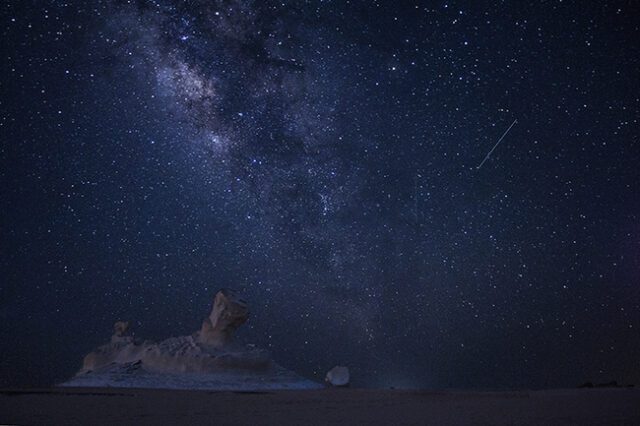
If you miss the Perseids, other opportunities exist to enjoy smaller meteor showers throughout the summer. From late July to late August 2024, six additional meteor showers will occur, including the Capricornids, Delta Aquarids, Piscis Australis, Alpha Capricornids, Iota Aquarids, and Kappa Cygnids. This array of showers ensures plenty of chances to witness these mesmerizing events. The Perseids, with a history of captivating human observers since at least 36 CE, remain a highlight of the summer sky. Their brilliance and frequency continue to awe spectators, making 2024 no exception. So, mark your calendars and get outside to enjoy these incredible natural light shows.


In a quintessentially Texan twist, a family in Amarillo, Texas, discovered a baby bird cold and abandoned on the ground during a swim party and barbeque. Acting quickly, the mother in the family, Katie Lasher Adlong, heated a tortilla on the stove and used it as a warm blanket to scoop up the chilly chick. Continue reading “Baby Bird Rescued in Texas Panhandle Wrapped in a Warm Tortilla Until Wildlife Experts Arrived” »

We’ve all experienced the simple joys of playing in the sand at the beach—burying siblings, constructing sandcastles, and letting our imaginations run wild. Now, there’s a novel twist to these classic activities with the introduction of Bag O’ Beach Bones, a set of bone molds that lets you create a life-sized human skeleton in the sand. This unique toy set not only enhances creative play but also offers an engaging way for children to learn about human anatomy. The 14-piece set includes molds for the legs, arms, hips, vertebrae, chest, and skull, allowing kids to assemble a detailed skeleton. With connected molds for hands and feet that ensure fingers and toes remain intact, this toy combines fun with education seamlessly.

Using the Bag O’ Beach Bones is straightforward and versatile. Align the molds on the sand, press down firmly, and carefully lift them to reveal a perfect bone imprint. The molds can also double as traditional beach buckets for building sandcastles, adding to their utility. Beyond the beach, these molds can be used in snow to create winter skeletons, making them a year-round source of entertainment. The durable plastic set also includes a net bag for easy storage and transport. The assembled skeleton reaches about 4.5 feet in height, depending on the placement of the molds. Available on Amazon for approximately $20, this innovative beach toy promises endless imaginative play for kids.
